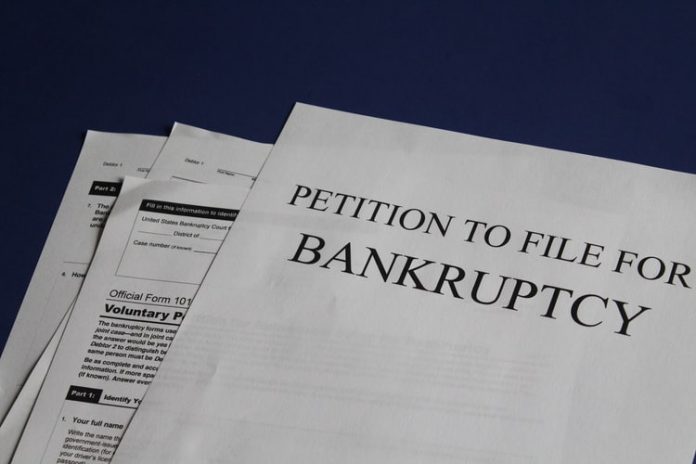This article is written by Varun Akar. The article talks about how the Prior period claims after approval of the resolution plan are not allowed under IBC.
As per Section 5(26) of the Insolvency and Bankruptcy Cody, 2016 (hereinafter, IBC or Code) a resolution plan is the proposed plan by a resolution applicant to the resolution professional for restructuring and reviving the stressed assets of the Corporate Debtor. Resolution Plan is the revival route for a corporate debtor which frees the former of its past liabilities and dues if paid in accordance with the approved plan. The plan of the successful resolution applicant once approved takes the form of a binding contract. Rajasthan High Court in the recent case of Ultra Tech Nathdwara Cement Ltd., (formerly known as Binani Cements Ltd.) v. Union of India through the Joint Secretary, Department of Revenue, Ministry of Finance & Ors., held that no demands can be raised once the resolution plan is successfully implemented by the successful resolution applicant for a period that was before the approval and finalization of the resolution plan.
Table of Contents
Brief Facts
An application under Section 7 of the IBC was filed by the financial creditor before the NCLT, Kolkata for the resolution of Binani Cement Company which suffered huge losses and was not able to repay the amount taken as debts. Ultra Tech being one of the creditors submitted the resolution plan, which was approved by the Committee of Creditors (hereinafter, COC). The plan was also approved by the Adjudicating Authority under Section 31 of the Code which had taken care of all the requirements of Section 30 of the IBC.
The claims of all the creditors were collated including that of the operational creditor and the claims of GST Department were verified, who were also one of the respondents in the present case, and calculated the liabilities and dues to the tune of Rs.72.85 crores to be paid in lieu of Excise duty and Service tax. The joint claims of the operational creditors were more than the liquidation value of the debtor which was Rs.2300/- crores and thus, the liquidation value available to the operational creditors including the respondent Department would be zero as the liquidation value will firstly be used for settling the claims of the Financial Creditors.
Receiving the approval of the resolution plan having been approved by the NCLAT and later by the Supreme Court on the appeal, the Petitioner took over the management and operations of the corporate debtor and subsequently renamed the company to Ultra-Tech Nathdwara Cement Ltd. After this, all the payments were made as per the approved resolution plan to all the creditors inclusive of the statutory creditors.
Later, the GST Department, one of the operational creditors, raised demands concerning the amount from the Petitioner, before taking up the company and after finalization of the resolution plan, i.e., of the period from April 2012 to June 2017. This amount was claimed along with an interest up to 25.7.2017. The Petitioner addressed the demands raised by the GST Department through a letter dated 26.11.2018 that all the dues have been met out and all the payments have been made as per the approved resolution plan. Further, in the letter Petitioner also cleared this point that all the remaining dues and proceedings will stand extinguished once the resolution plan was approved and payments were made thereof. The Petitioner company after getting no response from the Respondent approached the Rajasthan High Court through the writ petition under Article 226 of the Indian Constitution for seeking the appropriate relief as discussed above.

Arguments Raised
Petitioner
- It was contended from the Petitioner’s side that once the COC approves the resolution plan and it attains its finality, the same can’t be questioned in a court of law.
- Another set of arguments raised was that since the financial creditors are given preference over the operational creditors under the IBC while the resolution plan is being made, the statutory dues of the operational creditors have to be sacrificed.
- Lastly, the Petitioner argued that since the plan was approved by both the Supreme Court and the NCLAT, the GST Department assumes no jurisdiction to raise the demands from the Petitioner for the period prior to the date on which the corporate debtor was taken over by the Petitioner.
Respondent
- The Respondent raised an argument stating that the COC didn’t hear the claims of the GST Department and hence the latter is not bound by the approved resolution plan.
- They further contended that mere rejection of the SLP will not bar the Department’s right to raise its valid demands from the successful resolution applicant with respect to a resolution plan.
Decision
The High Court of Rajasthan stated that the issue revolves around a simple question, whether the approved resolution plan is binding on the department or not. The court held that Section 31 of the IBC mandates that the approved resolution plan shall be binding on the Central Government, State Government, or any other local authority to whom a debt is owed. The objective of IBC is to ensure the maximisation of the value of the assets of the corporate debtor and to ensure its revival, and this objective could only be achieved through the route of a resolution plan. Once approved, the same shall be binding on all stakeholders including the statutory dues holders who are operational creditors having no right to be in the COC when the resolution plan is made. Hence, the approved resolution plan shall be binding to the GST Department.
Further, the court took into consideration the decision given by the Supreme Court in the case of Committee of Creditors of Essar Steels India Limited Through Authorised Signatory v. Satish Kumar Gupta and Others, which stated that the financial creditors have to be given preference, in the payment as per the resolution plan, over the operational creditor. The court also noted that for achieving the purpose of the Code, there should be an evaluation of all the existing dues and liabilities of the corporate debtor which should be revived with the approval of the COC. The Tribunals are left with minimal grounds judicial review of the resolution plan approved by the COC.
The court further went on to say that there are two remedies under the IBC, firstly, the revival of the company, which should primarily be the concern of the resolution professional, and if this is not possible then secondly, sending the company for the liquidation. Given the factual matrix of the present case, the Court dismissed the claims of the operational creditors who filed an appeal in the NCLAT as well as in the Supreme Court with a specific plea that their claims have not been considered in the resolution plan by the COC. The Court observed that from the two situations possible, the respondents will gain significantly in the former because if the company goes into liquidation their claims will be assessed as nil as against the liquidation value of the assets of the corporate debtor. In the former case, where the company is being revived, they’ll receive the payment of Rs.72 crores, which had already been deposited by the successful resolution applicant in favour of the GST Department.
The Rajasthan High Court subsequently quashed the demand for claims relating to the prior period after the approval of the Resolution Plan and stated that the Respondents will be acting in an illegal, unreasonable, and unjust manner if they continue to raise their demands.
Analysis
The Rajasthan High Court is justified in its judgement for not allowing the claims raised by the GST Department. Three important issues have been lightened in the judgement, firstly, the treatment of prior period claims, secondly, statutory dues to be considered as operational debt and thirdly, priority in the treatment of financial creditors with respect to operational creditors.
Prior Period Claims After Approval of Resolution Plan
The question which arises after reading of the judgement is that if the claims of a creditor are brought before the resolution professional after the approval of the Resolution Plan, then what are the remedies available to him? The answer to the same is given under Section 31(1) of the Code which runs as, “If the Adjudicating Authority is satisfied that the resolution plan as approved by the committee of creditors under sub-section (4) of section 30 meets the requirements as referred to in sub-section (2) of section 30, it shall by order approve the resolution plan which shall be binding on the corporate debtor and its employees, members, creditors, [including the Central Government, any State Government or any local authority to whom a debt in respect of the payment of dues arising under any law for the time being in force, such as authorities to whom statutory dues are owed,] guarantors and other stakeholders involved in the resolution plan.” The above-said section didn’t include the phrase “including the Central Government, any State Government or any local authority to whom a debt in respect of the payment of dues arising under any law for the time being in force, such as authorities to whom statutory dues are owed” from the initiation of the Code. The explicit inclusion of the same by the legislature should be seen as a sense of assurance for the people who are implementing the resolution plan that no one, even the Government also, will not have the power later to pop up, once the resolution plan is approved.
Hence, from the above provision and discussion, it is crystal clear that once the resolution plan is finalized and approved, it shall be binding upon all the stakeholders and nobody shall have the power to change it. Even the Adjudicating Authority will not have a binding say on the approval of the resolution plan or on the commercial wisdom of the COC. The dues and liability as mentioned in the resolution plan as on the commencement of the Corporate Insolvency Resolution Process (CIRP), which is the day on which the application is accepted by the Adjudicating Authority, shall be binding on every stakeholder and the resolution applicant shall be bound to pay only those which are mentioned.
Also, the reason for invitation of the claims as on the date of commencement is that the claims of any of the creditors are not left out in the making of the resolution plan and hence claiming of the money after the passing of the resolution plan seems unjustifiable and unreasonable as sufficient opportunity has already been provided to submit the claims earlier.
This was done to ensure that no further such of this kind of dispute would arise in the future. Hence, in a situation where the claims submitted by the creditors, inclusive of the operational creditors, have been duly met by the Petitioner, no such question of reclaiming the full amount or a part of it or some different amount arises which pertains to a period prior to commencement of CIRP.
Further, Section 32A of the Code grants immunity to a corporate debtor from the liabilities arising out of the acts committed prior to the CIRP once the resolution plan is approved. Hence, drawing an analogy, one can very well presume that the restructured company will not be forced or liable for paying out the dues of the period prior to CIRP which have already been taken care off in the resolution plan. This will make the revamped company do its business effectively and efficiently and will achieve the objective for which the Code was enacted.
Statutory Dues to be Considered as Operational Debt
The NCLAT’s case of Pr. Director General of Income Tax (admn. & tps) v. M/s. Synergies Dooray Automotive Ltd. & Ors., substantiate on this point. The brief facts of the case are that an appeal was filed by Pr. Director General of Income Tax, Hyderabad & Mumbai and Sales Tax Department, Maharashtra against the various orders given by Hyderabad & Mumbai NCLT bench for the non- payment or short-payment of Income Tax, Sales Tax, and Value Added Tax as per the Resolution Plan approved under section 31 of IBC which is prejudicial to the interest of the Appellants. Further, they contended that they were not intimated about the CIRP and the meeting of COC.
The Appellate Tribunal concluded that the statutory dues shall be considered as operational debts and the authorities to whom such dues are entitled will be treated as operational creditors under section 5(20) of IBC. Further, the NCLAT is justified in its ruling to categorise the statutory liabilities under the head operational debt as the same has the direct nexus with the operations of the company since these debts arise only when the company is a going concern. Further, the authorities to whom such debt is owed such as the Central or the State Government or any department of the Government are considered as operational creditors for the reason that they are entitled to the dues arising out of the existing laws.
Priority in Treatment of Financial Creditors with respect to Operational Creditors
The Hon’ble Supreme Court in the Essar Steels case negated the impugned order of National Company Law Appellate Tribunal (NCLAT) which deviated from the settled position of law by treating the operational creditors on an equal footing with the financial creditor and also by not recognising the class within a class of secured and unsecured creditors under the class of financial creditor. The Apex Court by quashing the impugned order held that the principle of equity plays a fundamental role in determining the treatment to be given to a different class of creditors. The court further opined that by treating equally different classes of creditors having different bargain capacities as done by the NCLAT has severely resulted in distorting the well-settled law and the doctrine given under Article 14 of the Indian Constitution, i.e., equals should be treated equally, unequal should be treated alike.
The Court held that:
“Indeed, by vesting the Committee of Creditors with the discretion of accepting resolution plans only with financial creditors, operational creditors having no vote, the Code itself differentiates between the two types of creditors. Quite clearly, secured and unsecured financial creditors are differentiated when it comes to amounts to be paid under a resolution plan, together with what dissenting secured or unsecured financial creditors are to be paid. And, most importantly, operational creditors are separately viewed from these secured and unsecured financial creditors in S. No. 5 of paragraph 7 of statutory Form H. Thus, it can be seen that the Code and the Regulations, read as a whole, together with the observations of expert bodies and this Court’s judgment, all lead to the conclusion that the equality principle cannot be stretched to treating unequals equally, as that will destroy the very objective of the Code-to resolve stressed assets. Equitable treatment is to be accorded to each creditor depending upon the class to which it belongs: secured or unsecured, financial or operational.”
Conclusion
The fact that the operational creditors are put below the financial creditors at the time of resolution of the company and are not a part of COC and yet are bound by the decisions of the COC as held in the Essar Steel’s case is now the settled position of law. This judgement leaves no holes in the wall in maintaining the position of law and also in validating that once a resolution plan is made, it cannot be changed. Further, the very purpose of the Act is to ensure that the revival of the company can be done effectively. Thus, if the demands of such nature as discussed above are raised again and again, this would lead to an effect in the successful resolution of the company. Also, it will defeat the purpose of the Code, if the creditors approach the Tribunals again and again for their prior period claims. Hence, the Rajasthan High Court is justified in quashing the demands of the Respondents.
LawSikho has created a telegram group for exchanging legal knowledge, referrals and various opportunities. You can click on this link and join:
 Serato DJ Crack 2025Serato DJ PRO Crack
Serato DJ Crack 2025Serato DJ PRO Crack










 Allow notifications
Allow notifications



